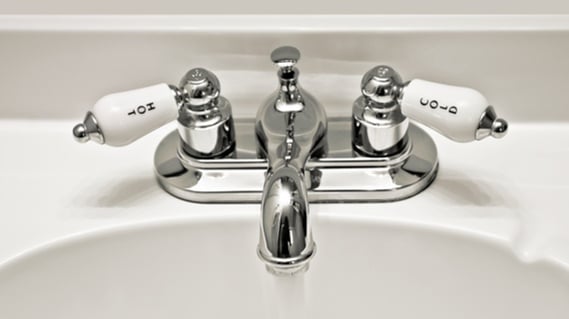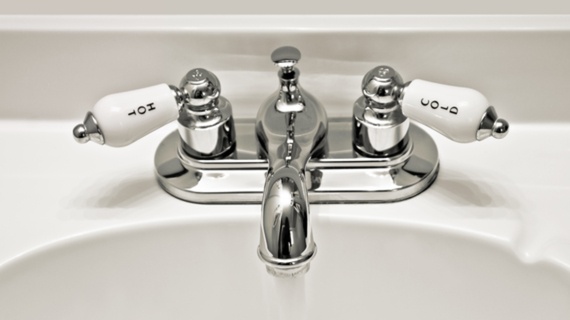
What is a thermostatic mixing valve (TMV)?
Put simply, a TMV is a precision device that blends hot and cold water together. They’re critical to reducing the risk of scalding, and in the UK their installation is mandatory in new buildings that have full-body water immersion fittings like a bath.
The valve is usually installed directly into the outlet so that the mixing occurs just before the water is expelled from your shower or faucet. There are guidelines for how these valves should be installed and maintained, and if they’re not looked after properly they can introduce further risks into the water system, like bacterial contaminations.
How do TMVs work?
- A desired water temperature is pre-set by the installer.
- Hot and cold water enters the valve.
- A thermal element within the valve expands and contracts.
- This action opens and closes the side valves supplying the hot and cold water; blending it together in the right amounts until it reaches the desired temperature.
The valve will offer complete protection against scalding, even if the supply of cold water is disrupted. In this case, the thermal element inside will fully expand, which will in turn cause the side valve to completely close - reducing the flow to the outlet.
Why are they important?
According to RoSPA, 13 children every day under the age of four suffer from a burn or a scald. TMVs help to combat this and allow installers to ensure water only ever flows from outlets at safe temperatures, protecting their users against these potentially fatal injuries.
Those particularly at risk of unregulated water temperatures include young children, the elderly, and anyone who has a reduced ability to react to a hot water hazard (for example people who are mentally or physically disabled). TMVs are widely used in care homes and healthcare facilities for this reason.
How are they regulated?
There are various laws and regulations in the UK that cover the installation and use of TMVs on business premises. Relevant guidance can be found on the HSE website. If this advice is not correctly followed, users are at risk of introducing further risks into their water system.
One example is the risk of legionella, which can rapidly multiply in water conditions created by TMVs that aren’t installed and maintained properly. Once the water is contaminated, anyone who comes into contact with it is at risk of Legionnaires’ disease. If an outbreak occurs, or if the risk of legionella itself isn’t measured (through a legionella risk assessment) and controlled to a compliant standard, the duty holder could face heavy fines and even imprisonment.
To see if your TMVs are compliant and able to protect your building against infection risks, download our free TMV legionella checklist.








